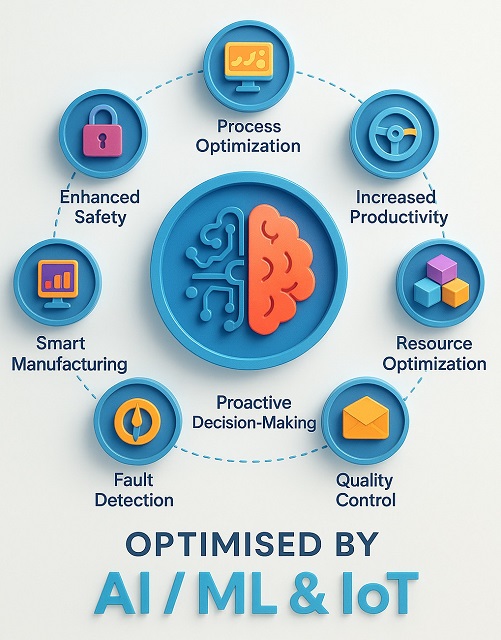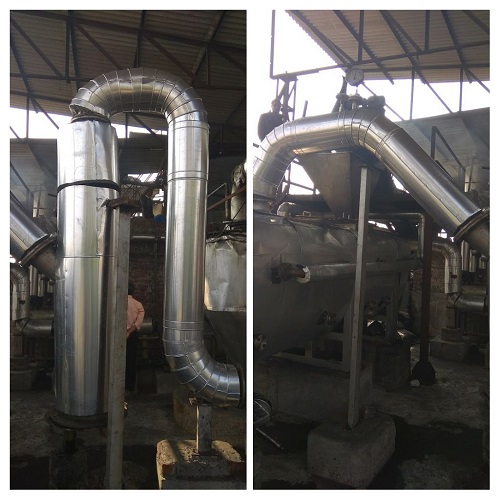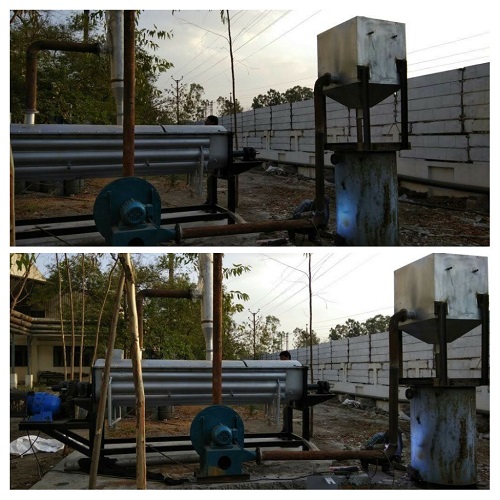ETP Sludge Dryer
Kerone Engineering Solutions Ltd. is a leading company in the provision of advanced industrial heating, drying, and process solutions of engineering globally. Having more than 50 years of expertise, we are experts in designing, producing, and delivering custom-made, state-of-the-art systems to meet the ever-changing requirements of the industries across the globe.
We have been involved in engineering excellence, sustainability, digitalization, and technological innovation to become a reliable collaborator whose business partners are in various industries. Kerone will implement Artificial Intelligence (AI), Machine Learning (ML), and Internet of Things (IoT) technologies in our systems to ensure smarter automation, real-time monitoring, predictive maintenance, and process optimization that is data-driven, thus enabling our clients to be more productive, efficient, and reliable.
The Kerone systems are designed to meet Industry 4.0, which leverages AI-powered analytics and IoT connections to provide clients with data insights and intelligent automation to manufacture next-generation products.

ETP Sludge is the industrial waste generated during the production method of the Industrial sewage processing. Because sludge has several disadvantages like high moisture content, high viscosity, high water holding capacity, and low calorific value. It’s difficult to attain industrial utilization. KERONE operated a series of technical researches on currently market scenario of sludge treatment and the characteristics of sludge in various regions. KERONE concentrating created a new generation of sludge rotary drum drying system, drying product moisture is reduced less than twenty fifth, it total achieved the quality of sludge landfill and further incineration process conditions. The technology of equipment gets absolutely mature enough, also its stable capacity of operation and very convenient to operate and maintain.
Sludge Drying systems designed and manufactured by Kerone are designed to fit for small, medium, and large quantity sludge generators. Drying systems can fit under the filter press for direct loading or can be located on remote locations within the plant. At the time of the thermal drying of sludge, almost all water is evaporated, including surface, capillary, and cell water. Supply of heat is needed, if possible from mutual power and heat generation systems. A great portion of the drying heat is recovered from the exhaust and re-circulated.
Characteristics of Technical Structure:- The full strength of the KERONE sludge drying machine has strong capacity of again sting overload, capacity of dealing with large amount of processing, less fuel consumption and low drying cost.
- By using the co-current drying method, the flue gas and wet materials from the same side get into the dryer, it uses high-temperature flue gas to obtain a high evaporation intensity, drying machine outlet temperature is low, high thermal efficiency.
- The operating parameters can be changed according to the nature of different materials, so that the material can form a stable full-cut fabric curtain in the dryer cylinder body, and the heat exchange of the quality is more complete.
- The new feeding and discharging device eliminates the blockage, discontinuity, non-uniformity, and material return of the tumble dryer and reduced the load on the dust removal system.
- The new internal structure strengthens the cleaning and heat conduction of the dispersed material, eliminates the sticking phenomenon of the inner wall of the cylinder, and has stronger adaptability to moisture and viscosity of the material.
- The new sludge drying equipment achieved a "zero horizontal thrust", greatly reducing the wear of the retaining wheel, the cylinder running smooth and reliable.
- Dryer adopts “aligning roller device” made the contact between the roller and the roller always be in linear contact, thus greatly reducing wear and power loss.
- By using the unique bulk sludge delay drying technology to ensure the uniformity of the slime drying.



